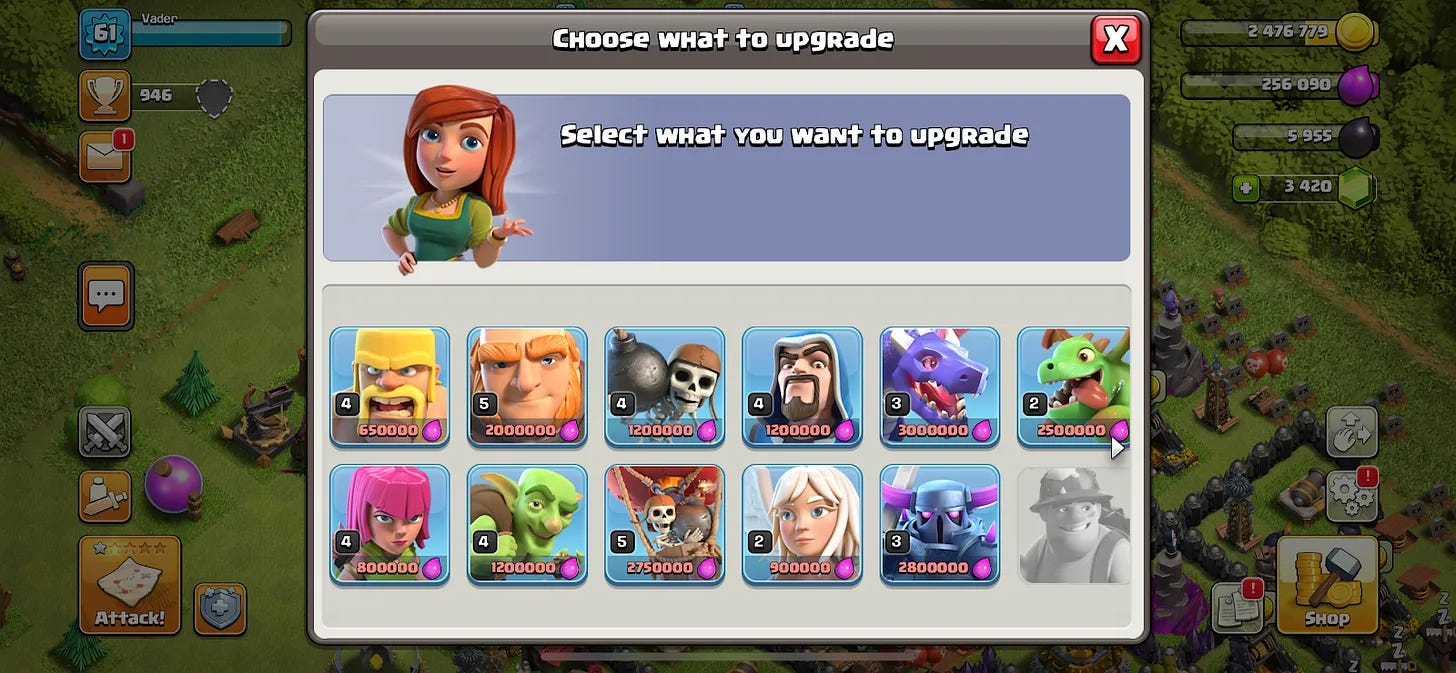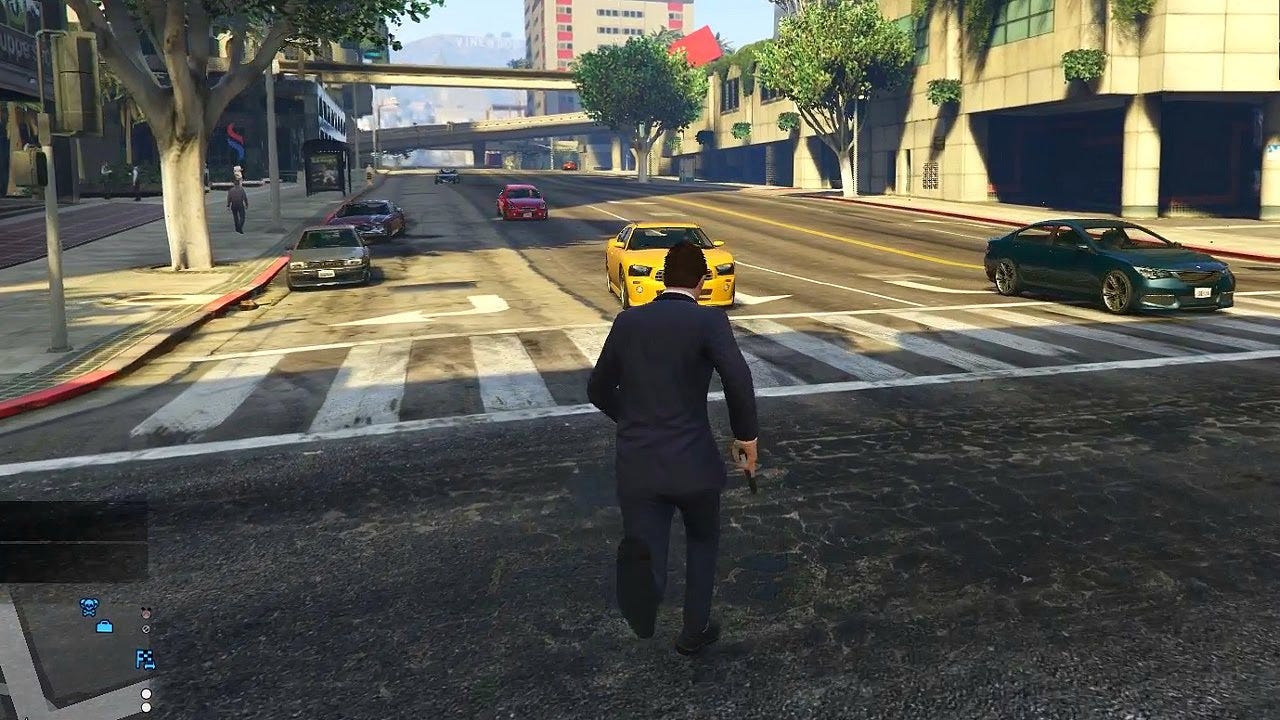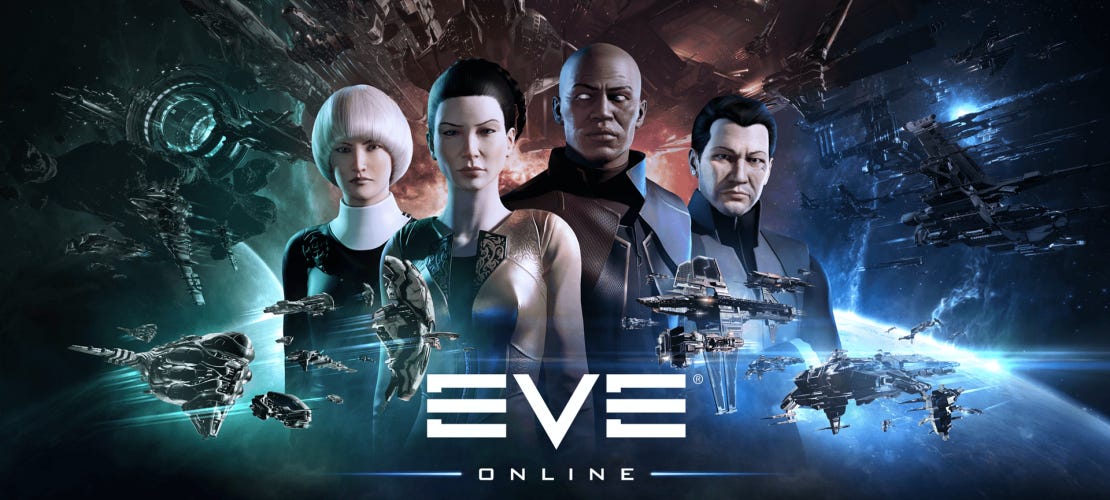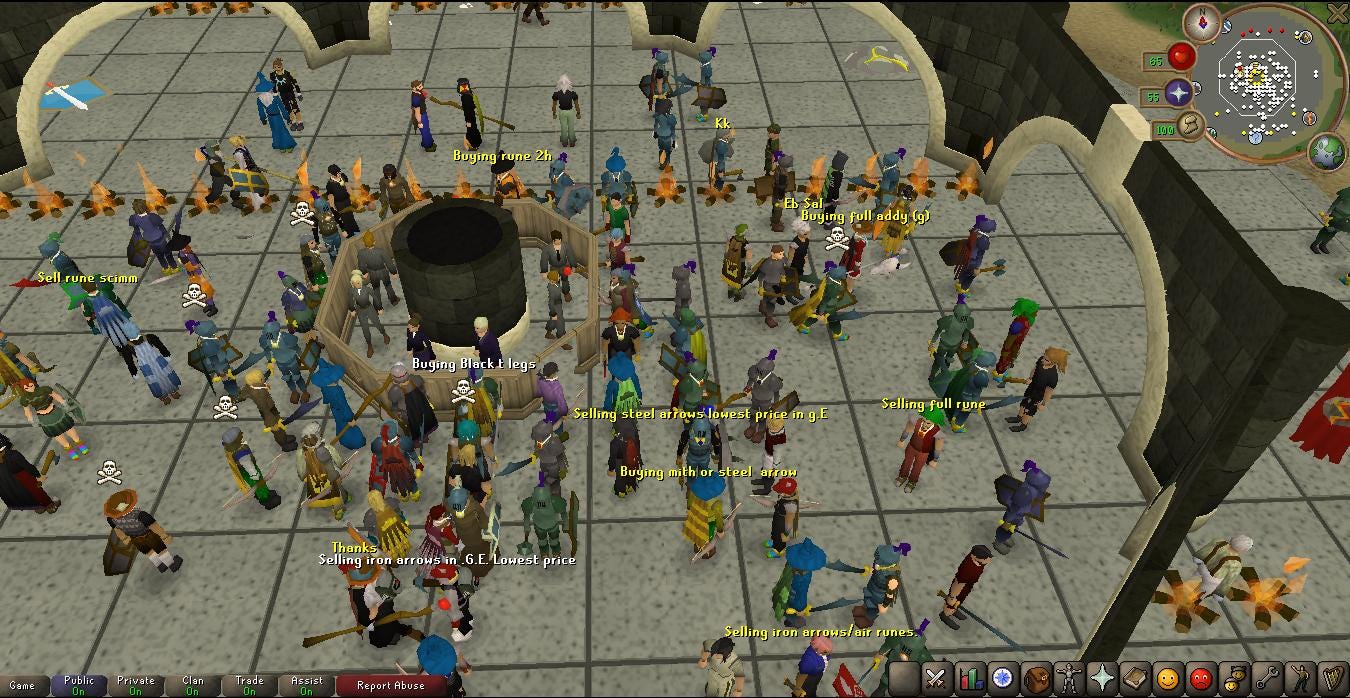Games typically monetize microtransactions via primary sales. There are a few web2 games that enable in-game items to be traded on secondary markets. In this piece, we will discuss the pros & cons of having a player-driven secondary market within a closed-loop economy.
Secondary Trading Disabled
Desired in-game items/microtransactions can only be purchased or earned from the developer in games that disable secondary trading. The developer generates 100% gross revenue from each purchase. The game dev sells a skin to Player A for $5 and a skin to Player B for $5. In aggregate, the developer generates $10 in total from 2 players.
The reward progression model contributes to what makes a game “fun”. Game developers optimize the reward progression curve through a data-driven process. A player that receives 10 gold for killing a minion but 1 gold for killing a boss may feel underappreciated (and might churn to another game).
Disabling secondary trading gives absolute control to game developers in optimizing the reward progression curve, item pricing and monetization with the aim to maximize player LTV (long-term retention and spending).


Secondary Trading Enabled
Desired in-game items/microtransactions can be purchased from other players in games that enable secondary trading. The developer generates 5-10% gross revenue from each purchase.
The game dev sells a skin to Player A for $5. Player A gets bored of it and sells the skin for $4 to Player B. The game dev generates $5.4 in total from those 2 players ($5m primary sale fee, $0.4 secondary royalties).
By enabling secondary trading, the developer generates a lower gross revenue per transaction. Additionally, since the economy is market-driven, the developer doesn’t have full control over the reward progression curve and item pricing which might negatively affect player experience.
Yet some argue that the existence of an immersive player-driven economy can increase player LTV as trading becomes its own game of social interactions and collaborations. Therefore, players purchasing desired in-game items from other players (rather than the developer) might result in higher spending per player.


Final Words
This was a short refresher on the implications of having secondary markets within closed-loop web2 game economies. Things get more complicated once real money gets involved in open-loop web3 game economies.
To summarize, disabling secondary markets enables the developer to generate 100% of every purchase and have full control of the reward progression curve, pricing and monetization. However, enabling secondary markets could potentially result in higher LTV as players would be willing to spend longer years and more money within the immersive player-driven economy.


